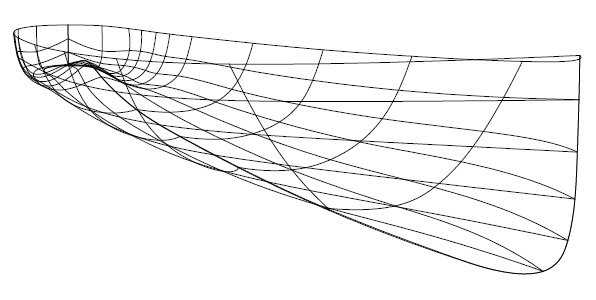
Hull
Consuta is a fast open launch built 1896/8 by S.E. Saunders at the Springfield Works Goring.
LOA: 51' 6", Beam: 7' 8", Draft: 1' 10".
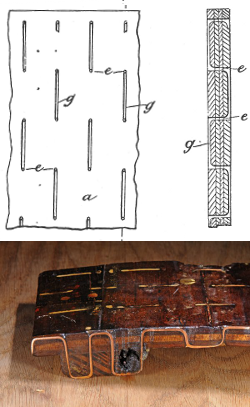
This sketch shows the method of hull skin construction. Consuta's hull is made from four mahogany wood veneers, three of 1/8" thick, the outer layer is 3/16" thick, stitched together with 16 gauge copper wire. The copper is a continuous stitch, about 1½" long, looping in and out of the hull. The veneers were interleaved with calico (canvas soaked in linseed oil) in order to provide a watertight skin.
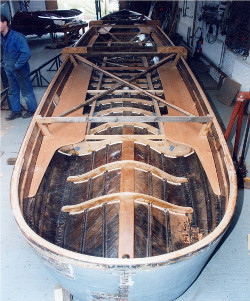
The hull was stiffened by longitudinal stringers and by a light box type structure linked to the passenger seat, these seats ran the whole length of the hull. This construction gave a very light but very strong hull.
There were no waterproof glues at this time. This form of sewn construction was patented by Saunders and was called Consuta plywood.
The launch originally weighed just over 3 tons in working order. This is extremely light for a 50 ft boat. The hull has a tunnel stern, reports of the time claim that this helped reduce wash when travelling fast. The hull construction was so successful that many other launches were built using the same copper stitching technique.
Saunders had a range of different size launches, many of which were propelled by electric motors. The tunnel stern hull form has also been a great success, similar hulls were made in GRP for umpiring duties just 8 years ago.
When Sam Saunders moved his boat building business to the Isle of Wight, he continued using the stitched hull construction method for some famous petrol engined racing motorboats. This type of hull construction was strong enough to withstand the heavy punishment of displacement hulls running at up to 50 mph.
Consuta plywood was also used for many of the amphibious aircraft of the early part of the 20th century.

Two steering wheels were fitted for umpire duty, one at the front cockpit for the umpire and the other behind the engine compartment.

The Engine
The steam engine in Consuta was built by G.F.G. DesVignes and is the original as fitted in 1898.
The cylinder block is mounted on 6 turned columns, with a cast iron main bearing base plate.
The engine has two cylinders, 6" bore × 6½"stroke, which are double acting. This means that steam is used to push the piston in both directions. The used steam exhausts at the end of each stroke through a nozzle at the base of the funnel, helping to draw more air through the damper door.
The engine is lubricated by several wick fed oil boxes and a range of oil holes on the moving parts, this traditional method is known as a total oil loss system; the oil drains from the engine into the sump for collection and later removal and disposal. The engine is also fitted with an oil pressure pump providing small amounts of oil into the steam pipe to lubricate the slide valves and pistons. The oil is pumped through a small pipe into the steam inlet manifold of each cylinder.

This type of engine is referred to as a twin simple double acting. The engine is fitted with ‘D’ type slide valves, which slide over the cylinder valve ports to control steam admission to the cylinders. The valves are driven from a slotted link operated by two eccentrics driving the slide valve for each cylinder. There are two sets of these eccentrics, one at each end of the engine. A reversing lever controls via the link which eccentric works the slide valve, the eccentrics are so arranged to provide for the forward or reverse rotation of the engine. The valve gear on Consuta’s engine is Stephenson’s reverse gear after it’s inventor. Each piston drives the crankshaft through a crank, the two cranks are set at 90 degrees apart, this permits the engine to start from any crank position.
The engine is directly coupled to the propeller shaft.
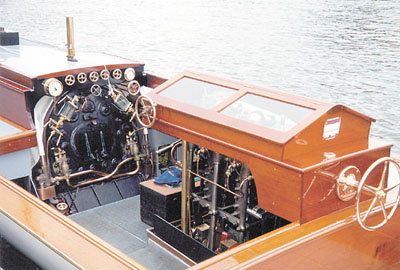
The Boiler
Locomotive type built by McEwan Ltd in 1985. Coal fired with a grate of 5 sqft, the firehole is on the backhead. There are 43 fire tubes of 1½" diameter. Boiler is 7' long fitted with two safety valves. Auxiliaries steam fittings are:- a ½ inch steam injector, a ¾ inch steam injector, a bilge ejector, a whistle, a blower and a Windermere Kettle.
The Trust would like to replace the current boiler with a new lighter design.
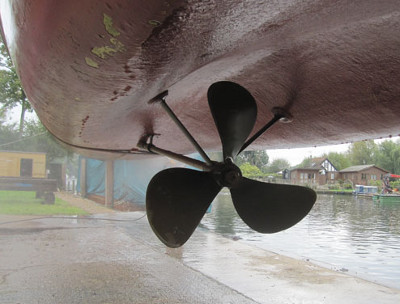
The Propeller
3 bladed propeller 30" diameter by 40" pitch fitted on 1.5/8" diameter Stainless Steel shaft.
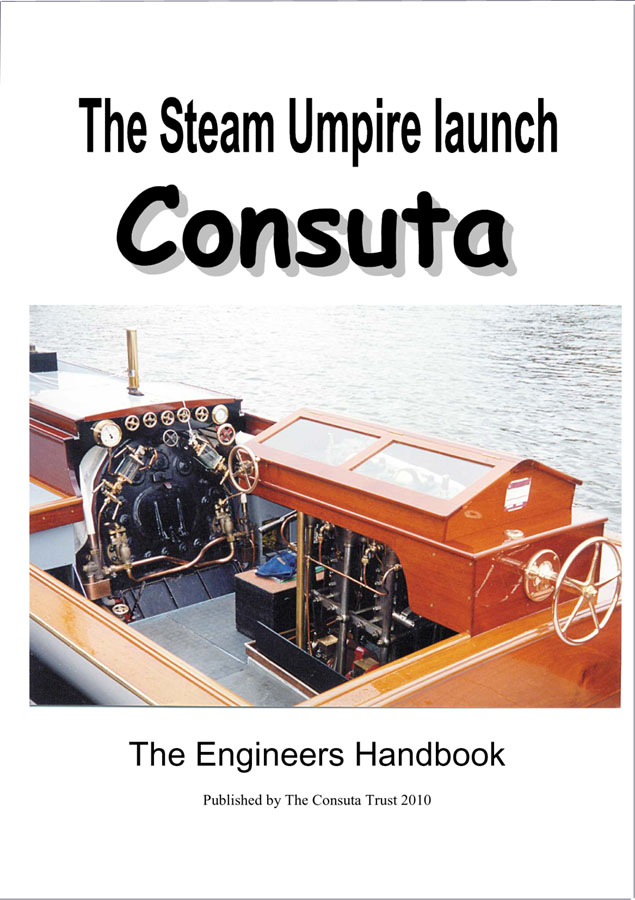
The Engineer's Handbook
We have a comprehensive engineer's handbook for operating the steam plant in Consuta which you can be downloaded as a PDF file.
Click to download the Engineer's manual
Please note that copyright of this manual is reserved to the Trust; but you are welcome to print out for your own use.

